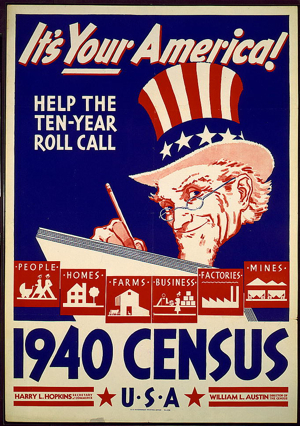If you haven’t already, you’ll soon be hearing more and more about the 2020 census.
April 1, 2020 is Census Day and beginning in mid-March, everyone will be receiving census forms in the mail. If you do not like filling out paper forms, the 2020 count will be the first one to allow all U.S. households to respond online. You can also call 1-800 numbers to give responses over the phone. All of us will be asked the following: how many people are living or staying at your home on April 1, 2020; whether the home is owned or rented; the sex, age and race of each person in your home; and whether a person in your home is of Hispanic, Latino or Spanish origin. Some of us will receive a longer form called The American Community Survey.
Article I, Section 2 of the Constitution mandates that a count of people residing in the U.S. take place every 10 years. Our founders used this to both determine the number of representatives each state has in Congress and the amount to tax each state. Putting the taxation and representation together assured an accurate count. The more people a state had, the more the state would be taxed and the fewer amount of people in a state meant fewer representatives for that state.
But, questions, questions… why so many questions?
The federal government bases a large amount of its spending decisions on census data. Census data also underpins state legislative districts and local boundaries, like city councils and school boards. Businesses use census data to determine where to build factories and stores. Are there enough skilled workers in an area? Are the people that live there interested in buying the stores products? A local government needs to know how many people are traveling to work and from where to determine roadways and other transportation needs. School districts need to know how many children are expected to attend, and their ages, in order to decide to build new schools and where to locate them.
The United States census is more than just a head count. The census has become a snapshot of America history. For more than 100 years, America was primarily a rural country of farms and villages, but the 1920 census showed that more Americans were living in towns and cities than on farms. In the 1840s, the common school movement was beginning to spread and the 1850 census asked if the person was at school within the last year and if the person was over 20 years of age, could they not read and write? By the 1890s, Civil War veterans were in their 50s and 60s and many were suffering from war wounds. The 1890 census questions included: Was this person a soldier, sailor or marine during the Civil War (U.S.A. or C.S.A.), or the widow of such a person? The nation was experiencing an economic collapse, and needed to plan for potential pensioners. The 1930 census included an unemployment census. Answers to questions helped steer the government’s response to the crash and the Great Depression. The 1940 census was the first to include a separate questionnaire on the nation’s housing conditions, including questions about indoor plumbing and kitchen appliances. In 1940, they asked if the home had a radio and in 1950 added televisions to the questions. By 1970, they asked if the home had a radio that was battery-operated.
Even though there are many questions, the Census Bureau will never ask you for:
Your social security number
Money or donations
Anything on behalf of a political party
Your bank or credit card account numbers
If someone claiming to be from the Census Bureau asks you for one of these things, it’s a scam, and you should not cooperate.
The Indiana State Library has a number of good books on the history and importance of the census:
Alterman, Hyman. 1969. “Counting people: the census in history.” New York: Harcourt, Brace & World.
Anderson, Margo J., and Stephen E. Fienberg. 1999. “Who counts?: the politics of census-taking in contemporary America.” New York: Russell Sage Foundation.
Anderson, Margo J. 1988. “The American census: a social history.” New Haven: Yale University Press.
Cassedy, James H. 1969. “Demography in early America: beginnings of the statistical mind, 1600-1800.” Cambridge: Harvard University Press
Klein, Herbert S. 2004. “A population history of the United States.” Cambridge, UK: Cambridge University Press.
This blog post was written by Marcia Caudell, supervisor of the Reference and Government Services Division at the Indiana State Library. Contact the reference desk at 317-232-3678 for more information.


